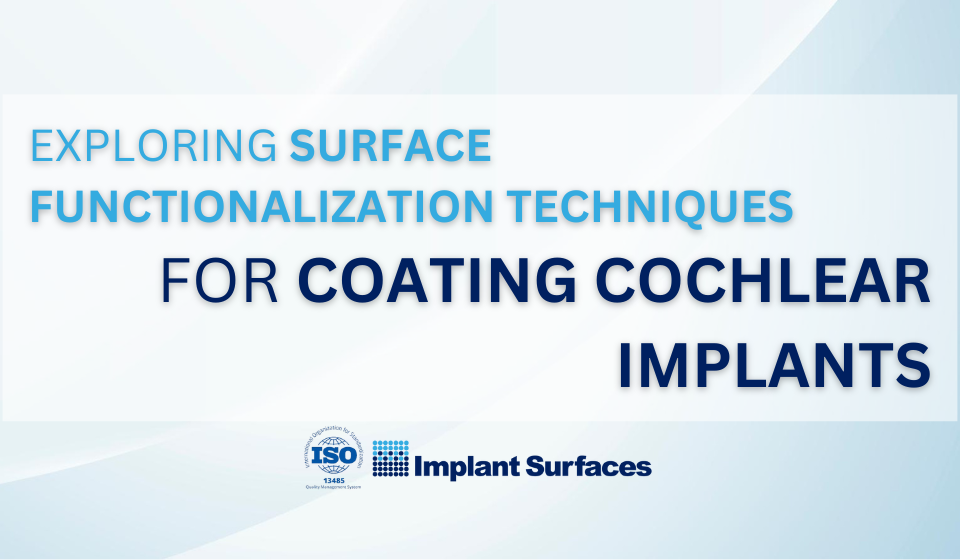
Exploring Photocatalytic Coatings for Self-Cleaning Orthopedic Implants
May 3, 2024
Innovations in Surface Coatings for Temporomandibular Joint (TMJ) Implants
May 5, 2024In the realm of implantology, achieving successful osseointegration relies heavily on the interaction between implant surfaces and surrounding cells. Among the factors influencing this interaction, surface wettability plays a pivotal role, dictating the initial adhesion and subsequent behavior of cells on implant surfaces. In this article, we delve into the intricate relationship between surface wettability and cell adhesion, exploring its implications for enhancing the biocompatibility and performance of implant surfaces.
Understanding Surface Wettability:
Surface wettability refers to the degree of attraction or repulsion between a surface and a liquid, typically characterized by the contact angle formed by a droplet of liquid on the surface. In the context of implants, surface wettability can be tailored to influence cellular responses, with hydrophilic surfaces promoting greater cell adhesion and spreading compared to hydrophobic surfaces.
Impact on Cell Adhesion:
Hydrophilic surfaces exhibit lower contact angles, facilitating the formation of a thin layer of water molecules known as the hydration layer. This hydration layer enhances protein adsorption, providing a favorable environment for initial cell attachment. Moreover, hydrophilic surfaces promote integrin-mediated signaling pathways, leading to enhanced focal adhesion formation and cytoskeletal rearrangements, ultimately bolstering cell adhesion and spreading.
Conversely, hydrophobic surfaces repel water molecules, resulting in limited protein adsorption and reduced cell adhesion. Cells encountering hydrophobic surfaces may exhibit altered morphology and reduced focal adhesion formation, compromising the strength and stability of cell-substrate interactions. As a result, hydrophobic surfaces may hinder osseointegration and compromise the long-term success of implants.
Surface Modification Strategies:
To optimize cell adhesion on implant surfaces, various surface modification strategies can be employed to modulate surface wettability. Chemical treatments, such as plasma etching and functionalization, can introduce hydrophilic functional groups onto implant surfaces, enhancing their wettability and promoting cell adhesion. Additionally, nanotexturing techniques can be utilized to create hierarchical surface structures that mimic the extracellular matrix, further augmenting cell-substrate interactions.
Future Directions:
As research in surface engineering and biomaterials continues to advance, novel strategies for controlling surface wettability and optimizing cell adhesion are poised to emerge. From bio-inspired coatings to stimuli-responsive materials, the future holds promising avenues for tailoring implant surfaces to better mimic the native tissue microenvironment, ultimately leading to improved clinical outcomes and enhanced patient care.
Conclusion:
Surface wettability plays a critical role in governing cell adhesion on implant surfaces, exerting profound effects on osseointegration and tissue integration. By understanding the principles underlying surface wettability and its influence on cellular responses, implant designers and researchers can devise innovative strategies to engineer implant surfaces with enhanced biocompatibility and functionality. Through ongoing exploration and innovation in surface modification techniques, the quest for optimizing cell adhesion on implant surfaces remains a cornerstone in advancing the field of implantology and improving patient outcomes.




